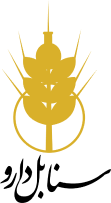دیدگاه طب سنتی ایرانی بر گیاه شناسی موثر در ترک اعتیاد به تریاک: مروری
Shabnam Khatami, Mohsen Naseri, Zahra Bahaeddin, Farzaneh Ghaffari, Abdolali Moosavizadeh, Niki Vakili Zahir
چکیده:
طب سنتی ایرانی (TPM) مجموعه ای از علوم نظری و عملی است که در تشخیص، پیشگیری و درمان اختلالات جسمی، روانی یا اجتماعی به کار می رود. این سیستم پزشکی کل نگر می تواند راه حل هایی را برای برخی بیماری ها از جمله اعتیاد به مواد مخدر ارائه دهد که طب مدرن تنها درمان علامتی را ارائه می دهد. از زمان شیوع اعتیاد در قرن شانزدهم، دانشمندان طب ایرانی راه های مختلفی را برای ترک آن معرفی کرده اند. در این مطالعه بررسی شد که آیا طب ایرانی گزینه های درمانی برای ترک اعتیاد به تریاک دارد یا خیر. ما کتاب های درسی اصلی TPM را مطالعه کردیم که به طور خاص در مورد اعتیاد صحبت می کردند. مطالعه ما بر اساس اولویت بندی سیستماتیک در طب سنتی انجام شد. علاوه بر این، پایگاههای اطلاعاتی علمی مانند PubMed، ScienceDirect، Scopus و Google Scholar مواد فعال گیاهی را در فارماکولوژی فعلی جستجو کردند. با این روش چهل و نه دارو پیدا شد و نه داروی با منشا گیاهی بالاترین امتیاز را در درمان اعتیاد به دست آوردند. از آنجایی که هدف اصلی این مطالعه یافتن داروهای جدید به لحاظ نظری موثر در ترک اعتیاد به تریاک است. ما به دنبال یافتن شواهدی مبنی بر این اثربخشی در فارماکولوژی مدرن بودیم و آنها را در اکثر داروهای اولویتدار یافتیم. اولویت بندی داروهای سنتی می تواند منجر به یافتن داروهای جدیدی شود که در مطالعات مدرن نیز شواهدی از اثربخشی دارند. بنابراین، آنها می توانند به عنوان داروهای طبیعی جدید برای بیماری ها معرفی شوند. فهرست داروهای بهدستآمده در این مطالعه میتواند مبنایی برای انجام مطالعات in vitro و in vivo برای طراحی و توسعه داروهای جدید در درمان اعتیاد به تریاک باشد. در واقع طب سنتی می تواند جایگاه ویژه ای در ترک اعتیاد به تریاک داشته باشد و باید از این ظرفیت بیشتر بهره برد.
Abstract:
Traditional Persian medicine (TPM) is a set of theoretical and practical sciences that are used in the diagnosis, prevention, and treatment of physical, mental, or social disorders. This holistic medical system can provide solutions for some diseases, including drug addiction, that modern medicine, only offers symptomatic treatment. Since the addiction prevalence in the 16th century, Persian medicine scholars have introduced various ways to quit it. In this study, we investigated if Persian medicine has treatment options to quit opium addiction. We studied the main textbooks of TPM that specifically talked about addiction. Our study was conducted according to a systematic prioritization in traditional medicine. Additionally, scientific databases such as PubMed, ScienceDirect, Scopus, and Google Scholar searched for plant active ingredients in current pharmacology. By this method, forty-nine drugs were found, and nine drugs with herbal origin obtained the highest score in addiction treatment. Since the main purpose of the study is finding new drugs theoretically effective in quitting opium addiction; we sought to find evidence of that effectiveness in modern pharmacology and we found them in most prioritized drugs. Prioritizing traditional drugs can lead to find new drugs which also have evidence of effectiveness in modern studies. Therefore, they could be introduced as novel natural remedies for disease. The list of drugs obtained in this study can be the basis for conducting in vitro and in vivo studies for design and development of new drugs in the treatment of opium addiction. In fact, traditional medicine could have a special place in quitting opium addiction, and this capacity should be further exploited.


